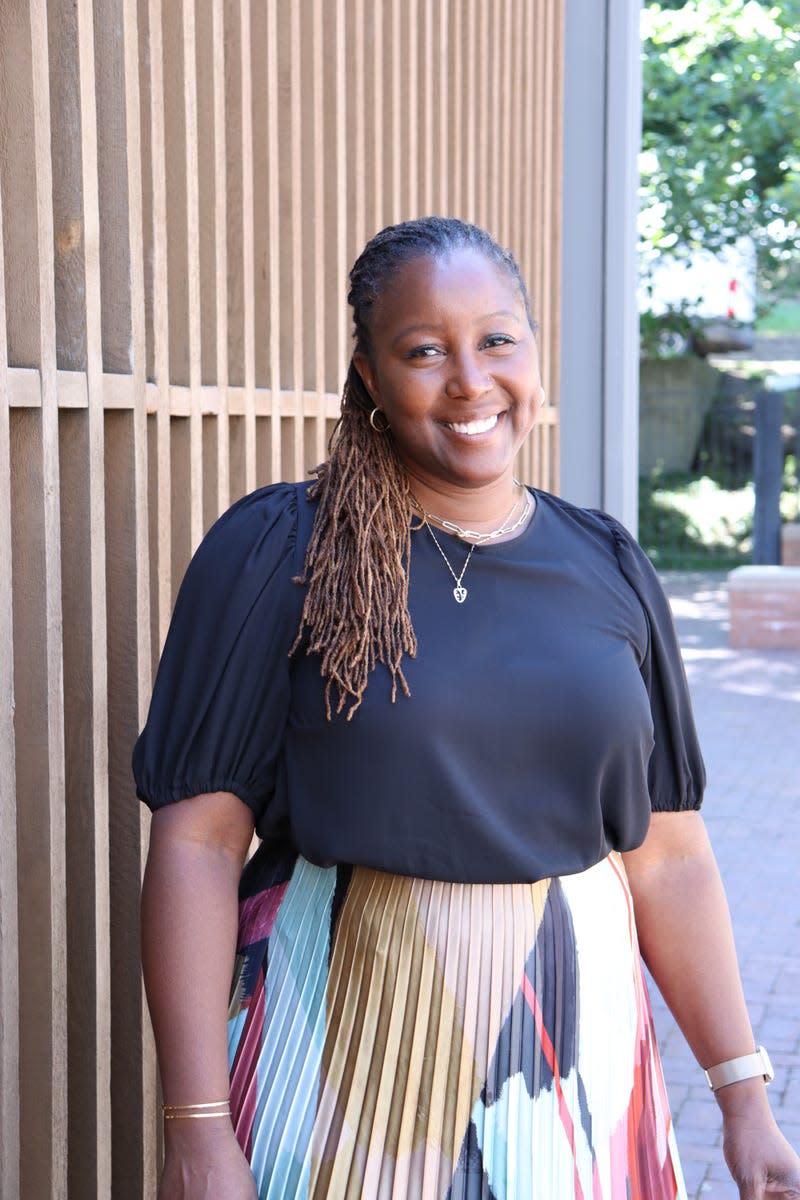The Threat of An Inclusive American Theatre

- Oops!Something went wrong.Please try again later.
When I accepted the role of Artistic Director of Oregon Shakespeare Festival (OSF) in 2019, I did so knowing about its reputation for being at the forefront of equity and inclusion. This effort to evolve, to progress, and to reflect humanity began in 1935 when Angus L. Bowmer founded what is now the Tony Award-winning theater company I lead. But I was never meant to be here. Not in Oregon, that began as a whites-only state whose deftly crafted Black exclusionary laws were designed to keep people like me out. Not in American Theatre, an industry whose deep, institutional racism was never meant to create space for Black Women in leadership. And not in this moment, when we are more politically and racially divided than I have witnessed in my lifetime.
And yet despite all this, I am here, the first Black female artistic director OSF has appointed in its 87-year history. I am in a unique position to implement the types of changes I want to see in our theater and our industry moving forward. This starts with creating an environment where all feel welcome. And as one of the few women of color in the country to lead a large historically and predominantly white theater company, I am confronted often with the lack of our voices and stories in this space.
Read more
As an advocate who has worked to increase diversity throughout my career, it often feels like change is slow as the pendulum swings in both directions. For, as proactive as OSF has been at working to shift systems of power from exclusivity to inclusivity, reactions to these changes have been swift and sometimes, violent. For example, when I first arrived at OSF I was told that in the 1950s, the first Black actress to ever play OSF was hired at a time when Ashland largely functioned as a “Sundown Town,” one in which African Americans risked harm if they were found within the city limits after sundown. The lore is that this actress had to be escorted to and from the theater, to protect her from bodily harm (Sundown Towns: A Hidden Dimension of American Racism, James W. Loewen, p 241 © 2005 The New Press, NY).
That is merely the earliest example I could find; though throughout the course of OSF’s history, many people of color who have worked here have been threatened, as I have. A recent NPR article that was focused on the changes to our theater gained national attention in large part because of one sentence: “Garrett has received death threats, and now travels with a security team in public.”
Like many theaters across the country, OSF is as progressive as it is also entrenched. That is what the death throes of a long history of white supremacy looks like, where efforts to alter and heal from racialized systems are met with backlash. We need only look to the tragedy in Charlottesville or the riots in Portland in 2020. We need only pay attention to the senseless murder of 19-year-old Aiden Ellison for playing his music from his car in a parking lot, right here in Ashland in 2020. Local reporting of that murder focused not on the young man who was killed, but on the humanity of the killer as a father who was staying in the hotel with his son after the Almeda fire took his home.
In the realm of politics and the unjust murders of Black and Brown people in America, where and how do making plays fit in? Classical Greek theater was a place for debating the social and political issues of the time. In his day, Shakespeare’s heavily political dramas were entertaining, educational, and popular, and have been used flexibly, throughout history to make meaning, and challenge cultural assumptions. This is perhaps why changes in the theater stoke the same fears and anger that changes in the White House or increasing diversity in an all-white town stoke: Historically, the individuals who believe they have ownership over the theater, who have been the self-appointed arbiters of “high art” are at an inflection point of change.

It is no longer good enough to “diversify” a cast every now and then; it is no longer enough to put on a play that has been written or directed by a person of color every once-in-a-while. These tokens have, in the past, been considered liberal, progressive, even risky acts for our industry, and perhaps, rightly so. But now, the entire system is being called upon to shift. To become inclusive at every level for its survival. Everything from artists, cast and crew, to administration, marketing and fundraising.
And while you might be hard-pressed to find an artistic director who would admit to compromising their mission for a funder, for most theaters’ bottom lines, individual donors are bread and butter. Because people of color have long been marginalized in American Theatre, donors of color are extremely rare, creating deep institutional inequities in philanthropy. Without diverse representation, what happens when existing donors no longer align with the fully inclusive direction of the theater? And what happens when you pointedly focus on those who have been traditionally excluded from their donorship at these institutions? These are questions we must contend with and challenges we must address.
Since 2020 after George Floyd was murdered and the nation was asked to reckon with the persistence of its white supremacist history, the New York Times repeatedly reported on this history as it expressed itself in American Theatre, from The Great White Way through to regional, local, and non-profit theater. Not only did Black artists and other artists of color come forward to share their personal experiences with racism, including threats of personal harm in their profession, we joined together to demand change in the theater (We See You, White American Theater, a manifesto of which I am one of the 300 signatories).
But data about funding and demographics also revealed an overwhelmingly white leadership and workforce, from artistic directors to marketing and communications—which means theater, inside and out, artist and audience, is a real and perceived stronghold of white prestige and power.
“Inseparable from the history are the economics,” read a 2021 article on Broadway’s racial reckoning. “Despite generations of discriminatory policies that have limited everything from property ownership to inherited wealth, non-white Americans now account for $4.7 trillion in spending power. However, audience demographics for Broadway, and live theater in general, have remained overwhelmingly white – about 76% of buyers each year.”
The theater industry has not evolved in step with the artists who are creating culture-shifting, seminal works, and the audiences who want to see them. And so the struggle is not only with theatergoers who are not ready to share their space, but with an industry that still operates to secure that space for them.
The challenges I have faced are symptomatic of a theater industry that has just enough people of color to make a noticeable change, but not enough people of color to eliminate the barriers that have long kept us out. This is why steps toward inclusion are met with accusations of exclusion. Why people of color in the industry are applauded for bringing in new, bold perspectives, yet accused of not appreciating or understanding the classics. Why criticism can give way to threats of harm.
After the broader media picked up on the threats I had received, PEN American issued a statement of support, writing: “Such threats and intimidation are inherently anti-democratic, wielded in hopes of silencing the voices of artists and suppressing creative freedom, and they pose a danger to every artist’s freedom of expression.”
For those of us who seek to reflect the world we live in through the work we put on our stage, this statement speaks to the core of what we do. It is our mandate to uplift the voices of artists, the truthtellers and changemakers, so they can continue to hold a mirror to society. And the truth is, the reflection in that mirror has changed dramatically over the years. According to the 2020 Census, nearly every county in the United States had become more diverse in the last decade, and for the first time, the nation saw a decrease in the white population. Before the pandemic, it was reported that ticket sales and subscriptions—the people who actually go to the theater to see the works—were declining. We are emerging from the pandemic in a new world, and we must get people back into the theater. The more we fight to keep diverse voices out, the more we will fail to sustain our industry.
My mandate as an artistic leader is clear: to place the artist at the center, create the conduit for how we engage, develop, and access new work, and how we interrogate the classics in both live and digital spaces. I see artists as thought leaders and change makers who transform culture by reflecting our current humanity back to ourselves. I trust artists throughout history and into the present because they have their ears to the ground and their hands on the pulse of humanity. They provide their hearts to help us deepen our empathy and broaden our horizons to what is necessary and possible to make a brighter future.
They are our mirrors to society—even, and especially, when society refuses to see its reflection.
Nataki Garrett is a nationally recognized director and the sixth Artistic Director of the Oregon Shakespeare Festival (OSF), one of the few women of color in the country to lead a major theater company and OSF’s first Black female in this role. For additional information, please visit: https://www.osfashland.org.
More from The Root
Sign up for The Root's Newsletter. For the latest news, Facebook, Twitter and Instagram.

